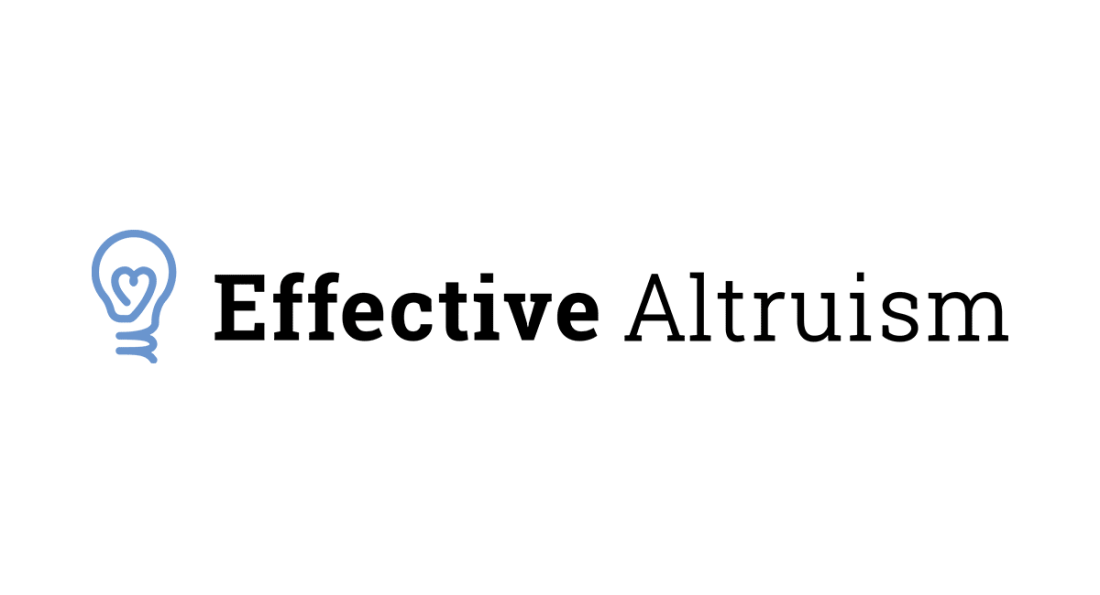Disclaimer: I am an employee of Sentience Institute but, as usual, this post represents entirely my own views.
There are already excellent resources considering the effectiveness of grassroots protests and how to maximise their effectiveness. These include:
- Animal Charity Evaluators’ report on protests. The list of likely positive and negative outcomes seems quite comprehensive, and the relevant evidence is clearly summarised.
- Sentience Institute’s foundational question summaries, especially on confrontation vs. nonconfrontation, individual vs. institutional interventions and messaging, and controversial publicity stunts vs. other tactics.
- A 2015 essay by Jacy Reese on “Confrontation, Consumer Action, and
Triggering Events.”
- A report by the Anyi Institute, commissioned by Open Philanthropy Project, on “Funding and Growing Social Movements.” This includes an explanation of a theory of how grassroots protests fit into a wider social movement “ecology,” evidence that they are underfunded relative to their effectiveness, and some ideas for how to measure impact.
- A 2016 summary of relevant evidence on direct action by Zach Groff, considering Direct Action Everywhere’s tactics.
Should we support grassroots protest with marginal EAA resources?
Individuals often have strong intuitions on the foundational questions in effective animal advocacy. Lack of awareness of particular arguments or pieces of evidence could lead to excessive optimism or pessimism about particular intervention types.
Other possible causes of excessive optimism about the effectiveness of grassroots protests:
- Preference for radicalism — Some interventions, such as those to improve the provision of animal-free food or to improve farmed animal welfare, may seem frustratingly slow and conservative. Grassroots protests may feel more direct, rapid, radical, and consistent with activists’ own beliefs.
- Getting swept up in mass enthusiasm — Engagement from activists may be a poor proxy for effects on the targets of the protest, be they institutional actors or the general public.
- Assumption that all publicity is good publicity — The way that society frames discussion of animal issues may be more important than how highly the public prioritise animal issues.[1] High salience of an issue could encourage polarization, which could encourage stagnation longer-term.[2]
- Overestimating the public’s enthusiasm for change — To the extent that we think that grassroots protests are likely to have diminishing returns and should be used sparingly, it may be better not to use them at this time. [3]
Other possible causes of excessive pessimism about the effectiveness of grassroots protests:
- Measurability bias — It’s tempting to focus on interventions that have more measurable outcomes and quicker feedback loops, such as corporate welfare campaigns, because the effects are clearer. However, more measurable interventions are not necessarily higher impact.
- Short-term focus — Certainly, some forms of grassroots protest actions are high risk. For example, high-profile protests may be perceived negatively and shift the framing of debate in an undesired direction.[4] Nevertheless, certain protests could have high positive impact if they shift the framing of public discussion in a positive direction, build substantial momentum for progress on animal issues, or secure major institutional commitments.
- Aversion to confrontation — Even if an intervention encourages a backfire effect among some of its audience, its overall effects could be positive.
- Low precedent within EAA — Apart from groups that use protests as part of campaigns to secure corporate welfare commitments, there are few groups funded by Open Philanthropy Project or recommended by Animal Charity Evaluators that use grassroots protests extensively.
Below are several different examples of grassroots protest tactics, with those that I think are the highest priority to support with marginal EAA resources listed nearer the top:
- The Humane League and the Open Wing Alliance — The welfare campaigns that these groups work on are very cost-effective on short timeframes.[5] Protests are a key part of these campaigns and the movement building efforts of these groups. On longer timeframes, however, I am uncertain whether welfare campaigns encourage more momentum for further change than complacency.[6]
- Animal Rebellion — This group (first protest scheduled for October 2019) has a clear institutional focus. It is taking advantage of the window of opportunity in the UK opened by Extinction Rebellion’s protests and the government’s declaration of a “climate emergency.” Given the disruptive nature of the protests, I am concerned about the risks of alienating the public and of activists burning out. Additionally, the goals of the environmental movement are not always aligned with those of effectiveness-focused animal advocates, so greater collaboration could have negative effects in the long term.[7]
- The Save Movement — The Save Movement has built up an impressive network of local groups that conduct regular vigils, “bearing witness” to animal suffering. The direct impact of these actions is likely low, since the disruption does not seem likely to pose a substantial threat to the slaughterhouses’ profitability. However, the large numbers of individuals that have been inspired to join vigils could possibly be mobilised for targeted campaigns with more specific institutional demands. The Save Movement is exploring this sort of opportunity, having seconded three staff members to work full-time on Animal Rebellion.
- Anonymous for the Voiceless — This group’s street demonstrations mobilise large numbers of regular activists to engage in individual vegan outreach using videos. Given the number of these events, even if this use of time would not likely be cost-effective for paid employees to conduct directly, it could still add up to a substantial impact overall. Research I’m doing for SI in the first draft stage has mixed implications for this.[13] On the other hand, I worry that the use of masks is counterproductive and that the activists could be engaged in higher impact interventions.
- Surge — Large scale marches for animals without specific institutional demands, organised by groups like Surge, have similar promise to The Save Movement’s vigils. However, I suspect that annual marches are less effective at building up a community of regular activists. In the short-term, I would guess that the chanting and focus on individual dietary change alienates more people than it encourages to reduce their animal product consumption.
- Direct Action Everywhere — DxE’s focus on systemic change (that is, longer-term impact), including via movement building, is great. My impression is that the narrative is really appealing to a lot of animal advocates. The focus of many of their protests on confronting individuals about their current consumption habits seems less promising to me. I also worry that these protests are shifting public discussion towards a more negative view of animal activists and the changes that they advocate for.
How can organisers maximise the impact of grassroots protests?
Questions to consider when seeking to maximise the impact of grassroots protests include:
- How can you increase the likelihood that media coverage and public discussion will be supportive of your aims, rather than hostile? For example, can you ensure that you use institutionally focused messaging? Can you target locations that symbolise the most unpopular and emotionally salient aspects of animal agriculture, such as slaughterhouses?[8] If the protests cause hostile public reactions, they could do more damage than good overall.
- How can you ensure that publicity and the increased salience of animal issues are converted into positive progress for animals? For example, what are the concrete demands that you will make and how likely are these to be accepted?[9] Some animal advocacy groups have built excellent support bases, but have not (so far) used this mobilisation to make concrete demands of relevant institutional actors.[10] This seems like a missed opportunity.
- How can the sustainability of this type of action be ensured? Protests that risk arrest could be demoralising if change is not forthcoming,[11] as well as damaging to the individuals involved.
- The factors listed by ACE’s report.
Research that I’d love to see
The research suggestions below could support improvements the effectiveness of grassroots protest groups and help to support resource prioritisation decisions in the EAA community. If you’re interested in conducting any of this research, feel free to get in contact with me directly at james_a_harris [at] hotmail.co.uk; I’d love to chat and possibly to help out directly.
- Surveys conducted before and after a wave of large-scale mass protest to evaluate the levels of support for the protesters’ demands and for other animal advocacy issues. Some questions could be based on those in SI’s survey. Asking participants in the second survey whether they had heard of the protest group would enable separate analysis of a “treatment” group (those who have heard of the group’s protests) and an imperfect “control” group (those who have not).[12]
- RCTs testing the effects of variations in messaging strategies, calls to action, and sites of protest (e.g. slaughterhouses, supermarkets, or government buildings) on support for the protesters’ demands and the likelihood of engaging with the protests.
- Tracking of media mentions of the protests, categorised on a scale from opposition to support. Noting features associated with particular protests (e.g. target location) could enable the tracking of correlations between use of those features the volume and supportiveness of media coverage. Tracking would be easier with online articles, e.g. via Google alerts.
Endnotes
[1] The importance of issue framing has been a consistent theme in Sentience Institute’s case studies.
[2] An example of where this may have happened is in the anti-abortion movement; I have a research report on this forthcoming for Sentience Institute. See also SI’s summary of the arguments for and against “controversial publicity stunts vs. other tactics.”
[3] It may be better, for example, to focus the use of these tactics around trigger events such as a food safety scandal, or the release of undercover investigation footage that has received unusually high media attention.
[4] See, by comparison, the effect that Operation Rescue has had on the anti-abortion movement.
[5] Although there is some scope for disagreement with this based on the size of the welfare improvements (e.g. see this comment by Wayne Hsiung of Direct Action Everywhere) and the possibility that companies will backslide on their commitments (see this report by Rethink Priorities), numerous groups have come to similar conclusions about the cost-effectiveness of these campaigns: Open Philanthropy Project, Animal Charity Evaluators, Founders Pledge, Rethink Priorities, and (sort of) Charity Entrepreneurship.
[6] I am about 75% confident that the movement-building effects of these campaigns are substantial enough that the interventions are positive overall, even if they do have small effects on encouraging complacency. I am less confident that the campaigns have substantial positive effects on increasing momentum for radical change, such as ending factory farming.
[7] See SI’s summaries of the arguments and evidence for “Broad vs. animal focus” and for “Animal protection vs. environmental vs. human health focus.”
[8] In Sentience Institute’s 2017 survey in the US, more people (47%) supported a ban on slaughterhouses than supported a ban on animal farming (32%).
[9] The protests by The Humane League provide a good example of where clear, concrete demands are being made. The protests are used to put pressure on a company to make a specific welfare pledge that has usually already been made by other companies. Consequently, large numbers of organisations agree to THL’s demands. A similar approach could be used for government targets.
[10] See discussion of The Save Movement, Surge, and Anonymous for the Voiceless above.
[11] Alesha E. Doan, Opposition & Intimidation: The Abortion Wars & Strategies of Political Harassment (Ann Arbor: University of Michigan Press, 2007), 88, writing on Operation Rescue, a direct action group in the anti-abortion movement, notes that “Many rank-and-file members could not keep up with the hectic pace of blockades, arrests, and imprisonment, especially as jail sentences were stiffened. By 1990, Operation Rescue was down to a core of ‘professional rescuers’ who traveled from city to city living off free food and lodging provided by pro-life sympathizers.” On page 86, Doan notes that “By 1990, Operation Rescue’s activities had significantly diminished—a paltry 34 blockades were held that year, and only 1,363 protesters were arrested [compared to 201 and 12,358 respectively in the previous year].”
[12] For an example of a paper that used a similar methodology, see Charles H. Franklin and Liane C. Kosaki, “Republican Schoolmaster: The U.S. Supreme Court, Public Opinion, and Abortion,” The American Political Science Review 83, no. 3 (1989), 764-7 and the methodological discussion in John Hanley, Michael Salamone, and Matthew Wright, “Reviving the Schoolmaster: Reevaluating Public Opinion in the Wake of Roe v. Wade,” Political Research Quarterly 65, no. 2 (2011), 408-21.
[13] Although I can’t condense the relevant evidence into a short footnote, the anti-abortion movement has used “sidewalk counselling” outreach extensively, but this seems unlikely to have had much/any positive effect on the rate of abortion incidence. However, I place high weight on the evidence from the health behaviour literature that “brief interventions” can be effective, and meta-analyses I have seen suggest that small effect sizes are most likely. This is similar to other forms of individual intervention in the health behaviour literature. Additionally, there is some evidence suggesting that brief interventions are not made more effective by increasing the amount of contact time involved in interactions. This suggests that interventions used in the farmed animal movement that rely on short interactions to encourage behaviour change, such as street outreach promoting veganism, may have some effect.



